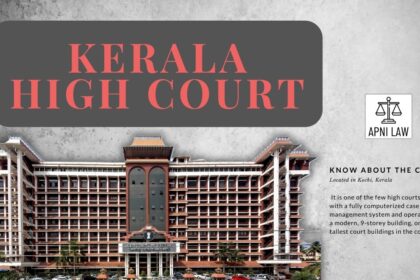Code: Section 57 BSA
Primary evidence means the document itself produced for the inspection of the
Court.
Explanation 1.—Where a document is executed in several parts, each part is primary
evidence of the document.
Explanation 2.—Where a document is executed in counterpart, each counterpart
being executed by one or some of the parties only, each counterpart is primary evidence as
against the parties executing it.
Explanation 3.—Where a number of documents are all made by one uniform process,
as in the case of printing, lithography or photography, each is primary evidence of the
contents of the rest; but, where they are all copies of a common original, they are not
primary evidence of the contents of the original.
Explanation 4.—Where an electronic or digital record is created or stored, and such
storage occurs simultaneously or sequentially in multiple files, each such file is primary
evidence.
Explanation 5.—Where an electronic or digital record is produced from proper
custody, such electronic and digital record is primary evidence unless it is disputed.
Explanation 6.—Where a video recording is simultaneously stored in electronic
form and transmitted or broadcast or transferred to another, each of the stored recordings is
primary evidence.
Explanation 7.—Where an electronic or digital record is stored in multiple storage
spaces in a computer resource, each such automated storage, including temporary files, is
primary evidence.
Illustration.
A person is shown to have been in possession of a number of placards, all printed at
one time from one original. Any one of the placards is primary evidence of the contents of
any other, but no one of them is primary evidence of the contents of the original.
—
Explanation of Section 57 BSA
Section 57 of the Bharatiya Sakshya Adhiniyam defines what constitutes “primary evidence.” It establishes that the original document itself, when produced before the court, is considered primary evidence. The section further elaborates various situations—both physical and digital—where a document or record qualifies as primary evidence.
This section is essential because the Indian Evidence Act places a higher evidentiary value on primary evidence compared to secondary evidence. Whenever possible, courts expect the original document or equivalent electronic records to be produced to prove the contents of a document.
Key Points:
-
The original document presented to the court is primary evidence.
-
Multiple parts of a document or signed counterparts are treated as primary evidence.
-
Documents created via the same process (like printing or photography) can each serve as primary evidence of each other.
-
For electronic and digital records, various forms of stored data and transmitted files can qualify as primary evidence, especially when produced from proper custody.
—
Illustration
Example 1: Physical Document in Multiple Parts
If a property sale agreement is signed in two parts—one kept by the buyer and one by the seller—each part is primary evidence of the agreement.
Example 2: Digitally Stored Files
A CCTV video is recorded and saved simultaneously to multiple drives. Each of these files qualifies as primary evidence, provided they are from proper custody and not disputed.
Example 3: Uniform Process Documents
A batch of flyers printed using the same printing plate can be used interchangeably as primary evidence of their content. However, they cannot serve as primary evidence of the original printing plate design.
—
Common Questions and Answers on Section 57 BSA
-
What is considered primary evidence under Section 57?
Primary evidence is the original document presented to the court. It is the best form of proof of a document’s contents.
-
Are digital files considered primary evidence?
Yes, Section 57 includes several explanations to affirm that digital and electronic files—whether simultaneously or sequentially stored—can be considered primary evidence.
-
What if a document is executed in counterparts?
Each counterpart is primary evidence against the party that signed it.
-
Can printed copies be primary evidence?
Yes, if a document is created through a uniform process (like lithography), each copy is considered primary evidence of the others—but not of the original design.
-
What happens if the primary evidence is unavailable?
If the original document is lost or cannot be produced, parties may rely on secondary evidence as per Section 58 and other related provisions.
—
Conclusion
Section 57 of the Bharatiya Sakshya Adhiniyam broadens the understanding of primary evidence to include both traditional documents and modern digital formats. By explicitly recognizing electronic records, simultaneous storage, and uniform processes, the law aligns with technological advancements in the handling and presentation of evidence. This section ensures that courts have access to the most authentic and reliable version of any document or record.
For more detailed legal resources and updates on Indian evidence law, visit ApniLaw.








